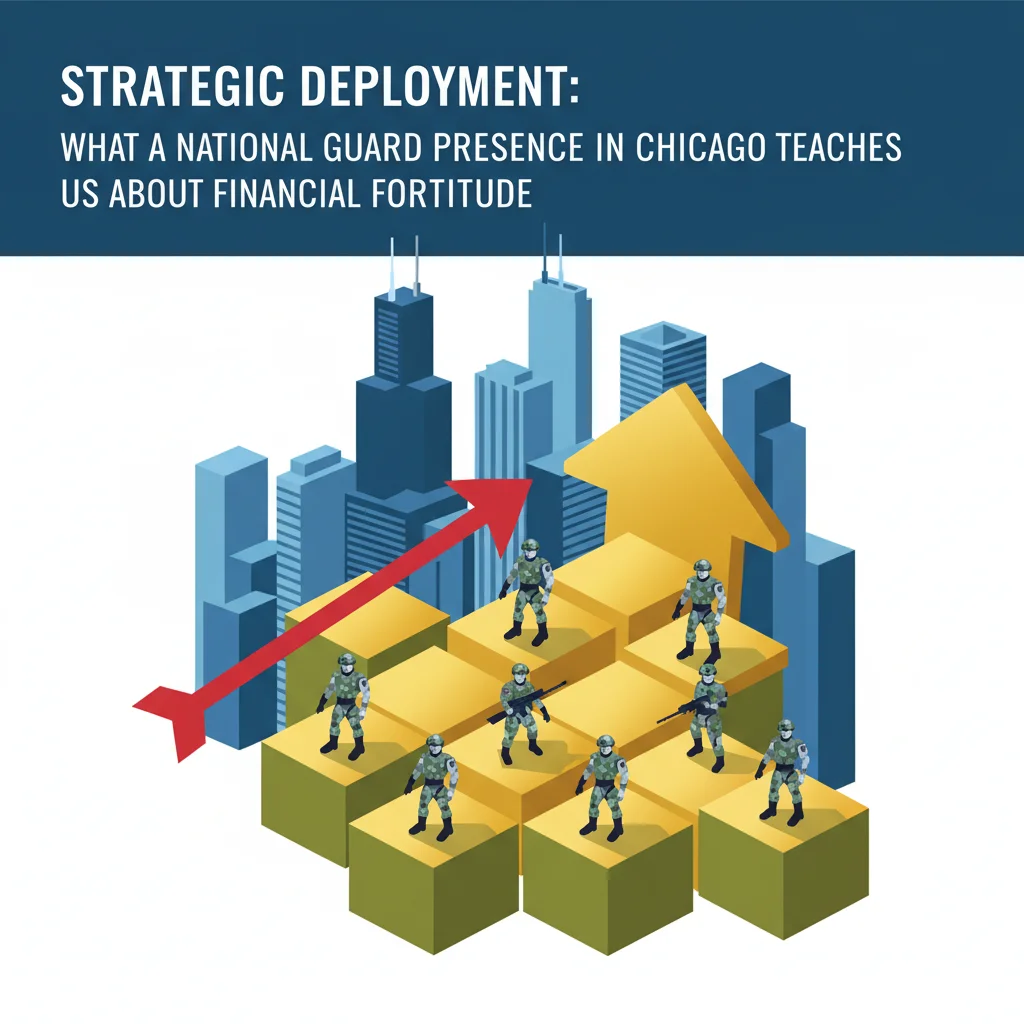
Strategic Deployment: What a National Guard Presence in Chicago Teaches Us About Financial Fortitude
In a move that captures national attention, the Texan National Guard is slated for deployment in Chicago. On the surface, this headline appears to belong squarely in the realm of domestic policy and security. It’s a story of logistics, jurisdiction, and civic stability. But for the discerning investor, the finance professional, or the business leader, events like these are more than just news—they are living case studies in strategy, risk management, and resource allocation. The principles that govern such a complex operation offer profound parallels to navigating the intricate and often volatile world of finance and the modern economy.
The core question is not about the politics of the deployment, but about the strategic thinking behind it. When we peel back the layers, we find a framework that can be directly applied to strengthening our portfolios, guiding our business decisions, and understanding the broader economic landscape. Let’s explore the critical lessons this deployment offers for anyone serious about their financial future.
The Proactive Management of Systemic Risk
A deployment of this nature is fundamentally an act of proactive risk management. The goal is to introduce a stabilizing force to prevent a potential crisis from escalating, thereby protecting the wider system—in this case, the city’s social and economic fabric. The cost of intervention is calculated against the potential, and far greater, cost of inaction.
This is the very essence of sophisticated investing. A well-constructed portfolio isn’t just about picking winners; it’s about building a defense against unforeseen shocks. Investors who wait for the stock market to crash before they consider diversifying are already too late. Proactive risk management in finance includes:
- Asset Allocation: Spreading capital across different asset classes (stocks, bonds, real estate, commodities) to ensure that a downturn in one area doesn’t decimate the entire portfolio.
- Hedging Strategies: Using financial instruments like options or inverse ETFs to offset potential losses in a portfolio.
- Stress Testing: Simulating how a portfolio would perform under various crisis scenarios, from a sudden recession to a geopolitical flare-up.
Just as security forces are deployed to contain a localized risk before it becomes a systemic threat, an investor must strategically deploy their capital to fortify their financial position against the inherent volatility of the economy.
Resource Allocation Under Pressure: A Lesson in Capital Efficiency
Mobilizing, transporting, housing, and sustaining a National Guard unit is an immense logistical and financial undertaking. It represents a significant allocation of taxpayer-funded resources. Every dollar spent, every piece of equipment moved, and every soldier deployed is a calculated decision aimed at achieving a specific objective with maximum efficiency. This is capital allocation in its most tangible form.
In the world of finance and business, the same principle applies. A company’s success often hinges on its ability to allocate its capital—whether financial, human, or technological—to projects with the highest potential return on investment. For the individual investor, this translates to:
- Budgeting for Investment: Deciding how much of your income to allocate towards savings and investments versus consumption.
- Choosing Your Bets: Determining whether to invest in high-growth tech stocks, stable dividend-paying blue chips, or emerging markets. Each choice represents an allocation of limited resources.
- Evaluating Opportunity Cost: Understanding that every dollar invested in one asset is a dollar not invested in another. This requires a clear-eyed assessment of goals and risk tolerance.
The discipline required for a successful military operation mirrors the discipline needed for successful long-term investing. It’s about making tough choices with limited resources to achieve a strategic, long-term goal.
The Unseen Economic Ripples and Market Sentiment
The visible presence of military personnel in a major American city has undeniable secondary effects. It can influence business confidence, alter consumer behavior, and shift perceptions of the city’s investment climate. A business owner might delay an expansion, a tourist might choose a different destination, and a corporation might reconsider opening a new headquarters. These are the economic ripple effects that aren’t captured in the initial headlines but have a real impact on local economics.
This is a powerful reminder of how sentiment drives markets. The stock market is not just a reflection of balance sheets and earnings reports; it is a massive engine of human psychology. News events, whether political, social, or environmental, can trigger waves of fear or optimism that dramatically influence trading volumes and asset prices. A savvy investor learns to look beyond the event itself and anticipate the second- and third-order effects on market sentiment and the broader economy.
The “Fintech” of Modern Operations: A Parallel in Innovation
At first glance, a military deployment seems


